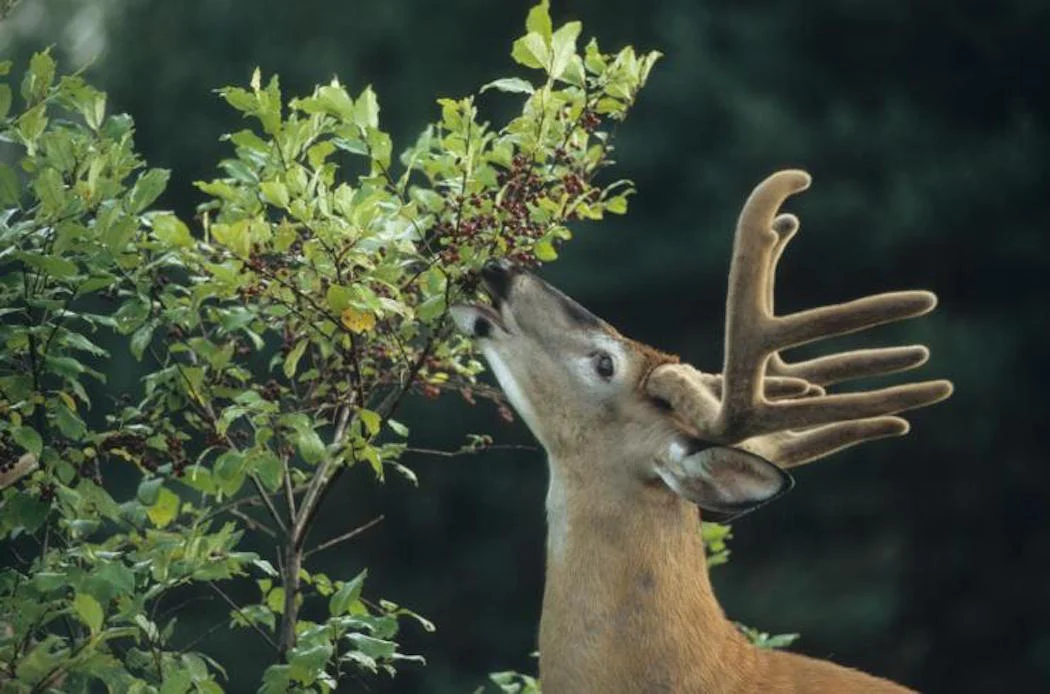Hunters frequently request simple solutions for food plots, as they are eager to know which foods provide optimal nutrition for whitetails. While their intentions are commendable, they often overlook the broader perspective. How? By neglecting the significance of proper forestry practices in deer management.
Whitetails generally require 6 to 10 pounds of food daily, so it’s not surprising that large deer populations can rapidly devastate habitats, especially forests.
The preferred natural foods for whitetails vary by region. In areas with a mix of agriculture and forests, about half of a whitetail’s diet should come from natural sources.
Deer consume over 500 varieties of browse species. Nutritionally, most of these species are low in protein, with crude protein levels rarely exceeding 4% to 9%. However, natural foods compensate for their low protein content by providing energy and fulfilling other nutritional requirements for whitetails.
Similar to humans, whitetails have distinct preferences and will consume large quantities of natural foods when available. The challenge for biologists, foresters, and landowners is maintaining a balance between habitat and deer population to ensure high quality in both the deer herd and the natural environment.
Indigenous Foods for Whitetails Below is a list of natural foods consumed by deer, all of which are essential to a whitetail’s well-being and the forest ecosystem.
Forbs/weeds. Among the numerous forbs, only a few are favored by whitetails. However, some forbs are highly nutritious and easily digestible, and deer consume these plants during specific seasons.
Grasses. Whitetails eat large quantities of grass in the spring. As summer approaches, grasses become fibrous and stalky, which deters deer from consuming them.
Mast crops. Acorns and apples are seasonal and highly sought after by whitetails. Though low in protein (4% to 7%), mast provides carbohydrates necessary for daily energy requirements. Mast production, however, is cyclical and not always available, regardless of the effectiveness of a management program.
Mushrooms. These fleshy, spore-producing fungi are highly nutritious. Yet, similar to many natural foods, their availability is limited. Mushrooms need ample moisture, so their supply might be restricted during dry years.
Lichens. These slow-growing plants typically exhibit a crusty, leaf-like appearance. Lichens are a combination of fungi and algae, growing on trees and rocks, and are an excellent source of trace minerals. Although deer consume lichens throughout the year, Northern whitetails rely on them more heavily during winter. Browse. Among all natural foods, whitetails depend most on browse, comprised of leaves and buds. In studies conducted at my deer enclosure, I discovered that protein levels don’t significantly influence the types of browse preferred by whitetails. For instance, during spring growth, my whitetails favor wild apple, ash, and basswood browse with protein levels of 3.8%, 4.8%, and 6.1%, respectively. The less-preferred leaves of American beech, striped maple, and wild black cherry have protein levels of 7.4%, 9.8%, and 13.4%, respectively.
Deer don’t always select the most nutritious leaves in terms of protein levels. Many animal nutritionists theorize that deer are drawn to certain browse species due to factors such as taste, sugar content, and fiber levels.
The Key Takeaway Whitetails require a variety of natural foods to fulfill their nutritional needs, and a well-managed forest is essential for providing these resources.
Contact us today to learn more about AntlerXtreme Contact


